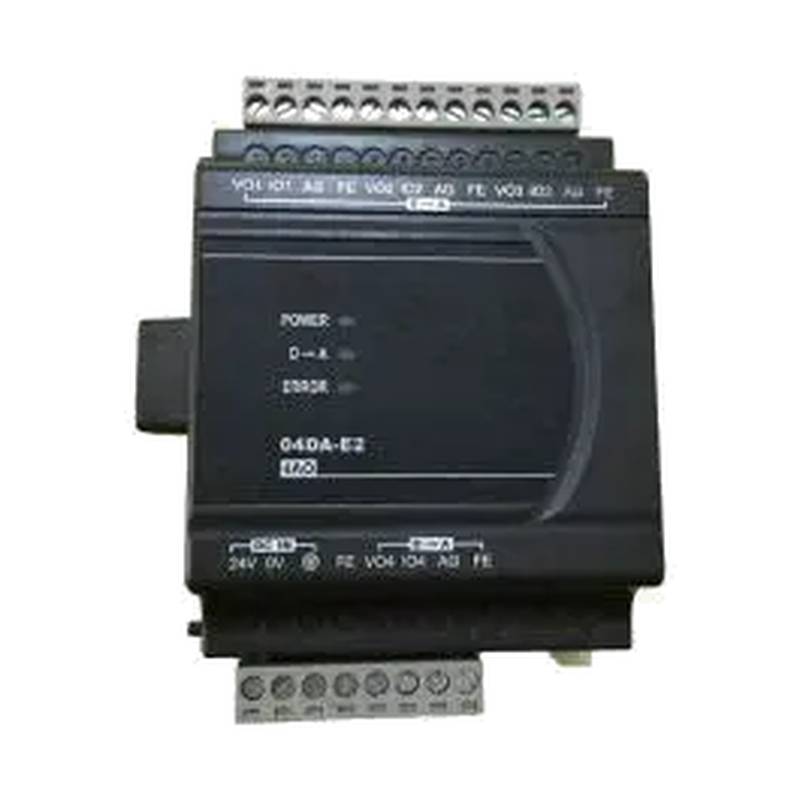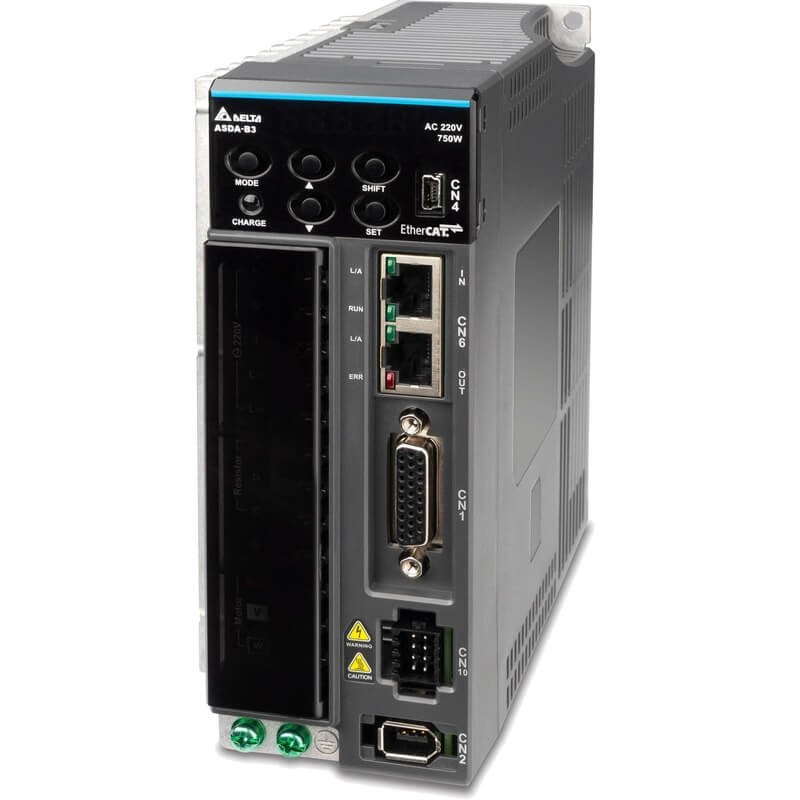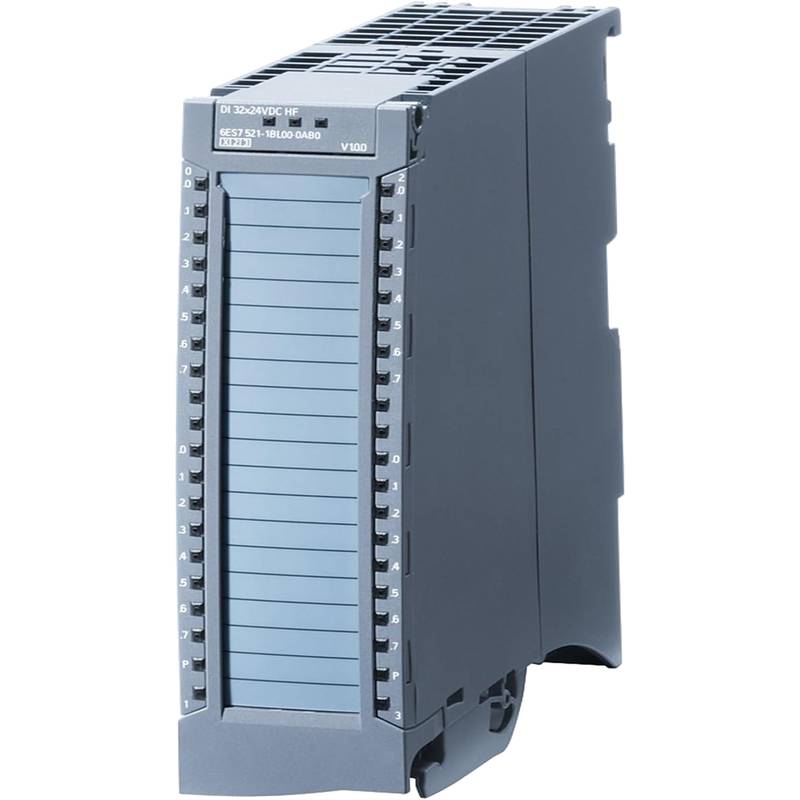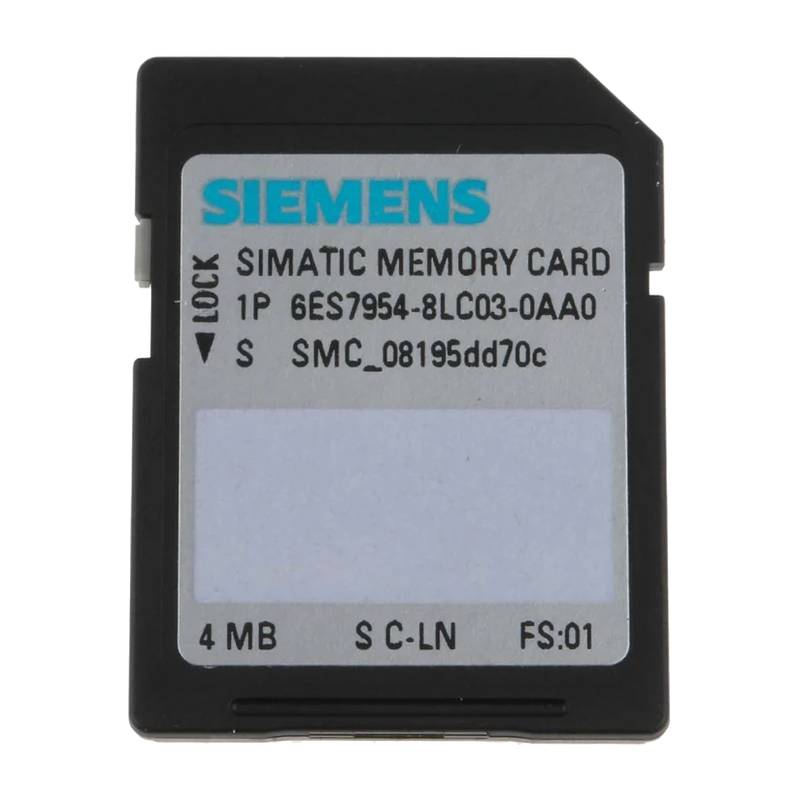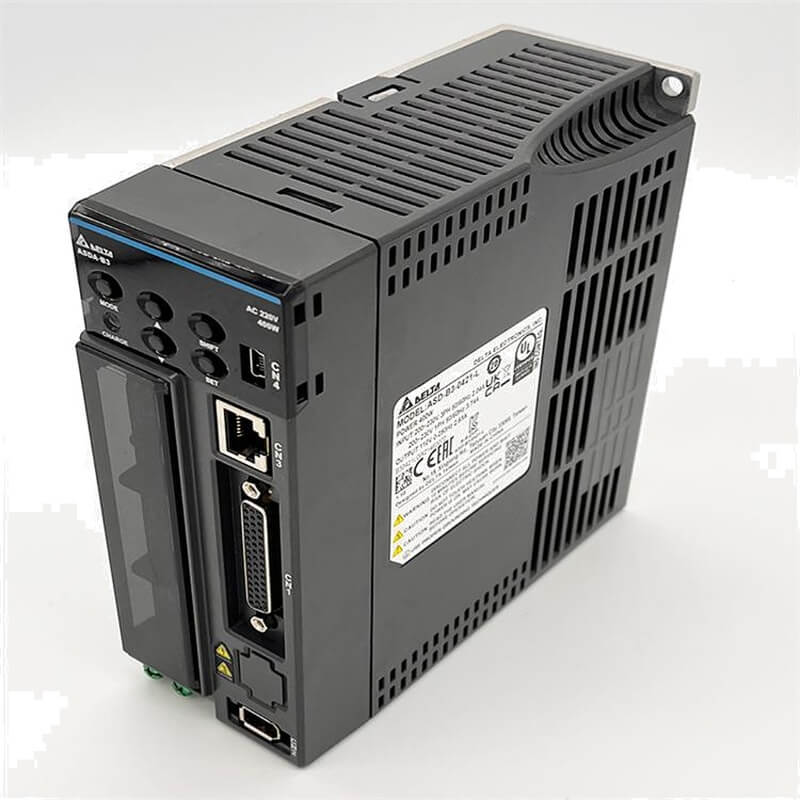
The Delta DVP02DA-E2 is a crucial component for industrial automation, offering precise analog signal control. This 2-channel PLC analog output module distinguishes itself through its high resolution, rapid response time, and robust design, making it ideal for demanding applications. Its core technical parameters include a voltage output range of ±10 V, a current output range of 0–20 mA or 4–20 mA, and a high resolution of 1/2000 for both. The module operates on a 24 VDC power supply and features an isolation design between channels and the power supply, enhancing system reliability and safety.
Product Specifications
| Feature | Specification |
| :--------------- | :----------------------------------------------- |
| Model | DVP02DA-E2 |
| Output Channels | 2 |
| Output Type | Voltage/Current (Selectable) |
| Voltage Output | ±10 V |
| Current Output | 0–20 mA, 4–20 mA |
| Resolution | 1/2000 (for both voltage and current) |
| Response Time | < 1 ms |
| Isolation | Between channels and power supply |
| Power Supply | 24 VDC |
| Communication | Via DVP series PLC (e.g., RS-485, CANopen) |
| Operating Temp. | 0°C to 55°C |
| Storage Temp. | -20°C to 70°C |
| Humidity | 5% to 95% (non-condensing) |
Core Features & Market Positioning
The Delta DVP02DA-E2 stands out in the competitive PLC module market due to its exceptional precision and versatility. Its 1/2000 resolution across both voltage and current outputs allows for extremely fine control over analog devices, a critical advantage in applications requiring high accuracy, such as precise motor speed control or delicate chemical dosing. The module's ability to switch between voltage and current outputs provides flexibility, enabling seamless integration with a wide array of industrial instruments and actuators without requiring specialized modules for different signal types. This adaptability, coupled with Delta's reputation for reliable industrial automation solutions, positions the DVP02DA-E2 as a cost-effective yet high-performance choice for systems integrators and end-users seeking dependable analog output capabilities.
Key Application Scenarios
The DVP02DA-E2 excels in scenarios demanding precise analog signal generation. It is widely deployed in process control for regulating flow rates, temperature, and pressure through precise manipulation of control valves and actuators. In manufacturing automation, it facilitates accurate speed and position control for servo motors and variable frequency drives (VFDs). Furthermore, its high resolution makes it suitable for laboratory automation and testing equipment where exact signal output is paramount. Industries such as water treatment, chemical processing, and sophisticated assembly lines benefit significantly from the module's accurate and reliable analog control.
Practical System Integration Guidance
Integrating the Delta DVP02DA-E2 into a DVP series PLC system is straightforward. Ensure the PLC is powered off before making any connections. Wire the module to the PLC's main unit according to the wiring diagrams provided in the Delta DVP-E Series PLC User Manual, paying close attention to the power supply terminals (24VDC and 0V). Connect your analog output devices, such as VFDs or control valves, to the designated output terminals (V1, V2 for voltage; I1, I2 for current), ensuring correct polarity. The output mode (voltage or current) is typically configured via software in the PLC programming environment (e.g., WPLSoft).
When programming the DVP02DA-E2, use the appropriate output instructions within the PLC logic. For example, to set channel 1 to 75% of its maximum current output (e.g., 15mA in a 4-20mA range), you would scale your desired process value to the module's raw output range (0-4095 for 1/2000 resolution) and then use an output instruction to write this scaled value to the corresponding output address. Ensure your PLC project is configured to recognize the DVP02DA-E2 module and its associated I/O addresses.
To ensure proper operation, it's vital to verify that the output range selected in the PLC software matches the input requirements of the connected actuator or device. For instance, if controlling a VFD that expects a 0-10V signal for speed reference, configure the DVP02DA-E2 for voltage output and ensure your PLC program scales the desired speed to the 0-10V range. Always consult the DVP02DA-E2 datasheet and the relevant PLC user manual for specific wiring and configuration details.
Operation and Risk Mitigation
During operation, ensure the DVP02DA-E2 is installed in an environment within its specified temperature and humidity ranges to prevent malfunction or premature failure. Regularly inspect wiring for signs of wear or damage to maintain signal integrity and prevent short circuits. When troubleshooting, check for common issues like incorrect wiring, incorrect output mode configuration in software, or output signals being out of range for the connected device. Always disconnect power before performing any physical maintenance or adjustments.
To mitigate risks associated with analog output control, it is crucial to implement proper scaling and range checks within the PLC program. For example, if an analog output is controlling a critical process parameter, implement software limits to prevent the output from exceeding safe operating boundaries, even if an erroneous value is commanded. Utilize the module's isolation feature to prevent ground loops and protect the PLC from voltage transients from connected field devices.
Fault indications on the PLC can often help diagnose issues with the DVP02DA-E2. Refer to the PLC system's error code list for specific fault descriptions that may point to module communication errors, output faults, or power supply issues. In cases of persistent faults, a systematic approach involving checking power, communication, and external wiring, followed by testing the module with known good components, is recommended.
Scalability & Long-Term Value
The Delta DVP02DA-E2 offers excellent scalability within the DVP series PLC ecosystem. Its compatibility with a wide range of Delta's DVP CPUs and other I/O modules allows for easy expansion of automation systems as production needs grow. This modular approach means you can add more analog output channels or integrate other I/O types without replacing the entire control system, significantly reducing upgrade costs and complexity.
Furthermore, the DVP02DA-E2 supports industry-standard communication protocols, facilitating integration into larger SCADA systems or IIoT platforms. By leveraging the PLC's communication capabilities, data from the analog outputs can be monitored, analyzed, and utilized for predictive maintenance or process optimization, contributing to the long-term digital transformation of manufacturing operations and enhancing overall operational efficiency.
Investing in the Delta DVP02DA-E2 ensures long-term value through its robust construction, reliable performance, and Delta's commitment to product longevity. The ability to easily expand and integrate this module into evolving automation architectures means it remains a relevant and valuable component, supporting your business's growth and technological advancement for years to come.
FAQs
1. What is the primary function of the Delta DVP02DA-E2 module?
This module generates precise analog output signals, typically voltage or current, to control external devices. It offers two independent output channels for versatile application in industrial automation.
Its high resolution ensures accurate manipulation of parameters like motor speed or valve positions. This precision is crucial for processes requiring fine-tuned adjustments and consistent performance.
The DVP02DA-E2 integrates seamlessly with Delta's DVP series PLCs, providing a reliable and scalable solution for analog control needs within automated systems.
2. How do I select between voltage and current output modes on the DVP02DA-E2?
The output mode selection is typically performed via software configuration within the PLC programming environment. You will use specific instructions in your PLC program to set the desired output type.
Consult the Delta DVP-E Series PLC User Manual or the specific programming software (e.g., WPLSoft) for detailed instructions on configuring the output mode for the DVP02DA-E2 module. Ensure the selection matches your connected device's requirements.
Always verify the selected output mode against the specifications of the connected actuator or instrument to prevent damage and ensure proper operation. This ensures optimal signal transmission and device compatibility.
3. What are the typical resolutions and accuracies I can expect from this module?
The DVP02DA-E2 boasts a high resolution of 1/2000 for both its voltage and current outputs. This means it can divide its full output range into 2000 discrete steps for fine control.
This level of resolution allows for very precise signal generation, essential for applications demanding tight tolerances and accurate process regulation. It minimizes signal quantization errors.
While specific accuracy figures are detailed in the datasheet, the 1/2000 resolution generally translates to high accuracy, suitable for sophisticated automation tasks where minor deviations are unacceptable.
4. Can the DVP02DA-E2 module be used with PLCs from other manufacturers?
While designed primarily for Delta DVP series PLCs, integration with third-party PLCs might be possible through specific communication protocols if supported by both the PLC and the DVP02DA-E2. However, direct native integration is limited to Delta systems.
This typically involves using communication modules or gateways and configuring data exchange via protocols like Modbus RTU, if the DVP02DA-E2 supports it through its host PLC. Extensive programming would be required.
For optimal performance, reliability, and ease of integration, it is strongly recommended to use the DVP02DA-E2 module within its intended Delta DVP PLC platform. This ensures seamless functionality and support.
5. What is the recommended wiring procedure for the DVP02DA-E2 module?
Ensure the PLC system is powered off before commencing any wiring. Connect the module's power terminals to a stable 24 VDC power source, observing correct polarity for VDC+ and 0V.
Wire the analog output signals (V1, V2 for voltage or I1, I2 for current) to the corresponding input terminals of your external devices, such as VFDs or actuators. Pay close attention to correct polarity and signal type matching.
Refer to the official Delta DVP-E Series PLC User Manual for detailed wiring diagrams specific to the DVP02DA-E2 module and its placement within the PLC rack. Accurate wiring is critical for safe and reliable operation.
6. How does the isolation feature benefit my system?
The isolation between the analog output channels and the module's power supply prevents ground loops and interference. This enhances signal integrity and prevents noise from affecting control accuracy.
It also provides protection against voltage spikes or faults originating from connected field devices, safeguarding the PLC and the DVP02DA-E2 module from potential damage. This increases system robustness.
This safety feature is crucial in industrial environments where electrical noise is common, ensuring reliable and stable operation of your automated processes. It simplifies troubleshooting by isolating potential electrical issues.
7. What are common troubleshooting steps for issues with this analog output module?
First, verify that the module is correctly powered by a stable 24 VDC supply. Next, check all wiring connections for proper termination, polarity, and absence of shorts or open circuits.
Review the PLC program to ensure the output mode (voltage/current) and the output scaling are correctly configured and match the requirements of the connected device. Check PLC status indicators for any fault codes.
If issues persist, try testing the module with a different, known-good analog output device or by swapping channels if applicable, to isolate whether the problem lies with the module, the wiring, or the external device.
8. What are the environmental operating limits for the DVP02DA-E2?
The module is designed to operate within a temperature range of 0°C to 55°C. It also requires a humidity level between 5% and 95% non-condensing.
Adhering to these environmental specifications is crucial for maintaining the module's performance and longevity. Exceeding these limits can lead to erratic behavior or permanent damage.
Ensure proper ventilation and enclosure conditions are met to keep the module within its specified operating parameters, especially in harsh industrial settings.
9. How can the DVP02DA-E2 contribute to scalability in an automation system?
The DVP02DA-E2 is part of Delta's modular DVP series, allowing easy expansion by adding more modules or CPUs as system requirements grow. This plug-and-play approach simplifies upgrades.
Its compatibility with various DVP series PLCs means you can integrate it into existing or new control architectures without major redesigns. This protects your investment.
By using standard communication interfaces, the module can also be easily integrated into larger networked systems, facilitating future expansion into areas like IIoT and advanced data acquisition.
10. What safety considerations should be observed when working with the DVP02DA-E2?
Always ensure the power supply to the PLC system and the module is completely disconnected before performing any wiring, maintenance, or physical adjustments. Follow lockout/tagout procedures.
Ensure that the analog output signals and voltage levels are within the safe operating limits of the connected equipment and personnel. Implement software limits as a safeguard against over-control.
Utilize the module's isolation features to prevent electrical hazards and ground loops. Familiarize yourself with the system's emergency stop procedures and emergency shutdown capabilities.














